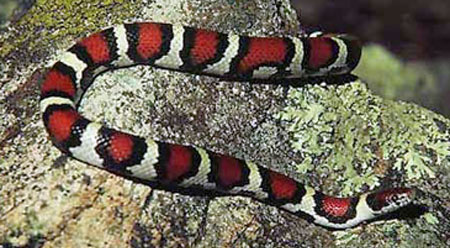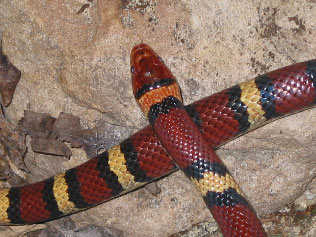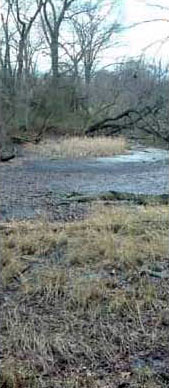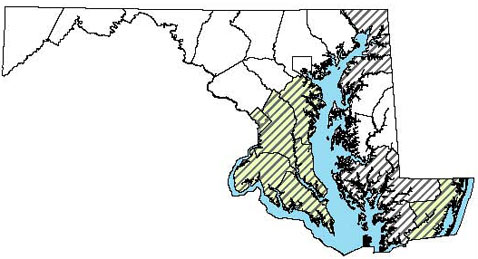Field Guide to Maryland's Snakes (Order Squamata)
Main_Content
Coastal Plain Milksnake (Lampropeltis triangulum elapsoides X triangulum) | 
Coastal Plain Milksnake Photo courtesy of Scott Smith |
Size:
24 - 36 inches. Record - 52 inches. |
Appearance:- This snake is currently considered an intergrade between the Scarlet Kingsnake and the Eastern Milksnake, though taxonomic and genetic work is ongoing.
- Arguably our prettiest snake, specimens exhibit a wide variety of patterns and colors.
- Diagnostic features include:
- a light neck collar and
- the typically reddish blotches bordered in black which occur on the back reach the belly scales on the forepart of the body,
but do not continue across the entire belly (like in the Scarlet Kingsnake).
- Scales not keeled.

Coastal Plain Milksnake Photo courtesy of Corey Wickliffe

Close-up Photo of Coastal Plain Milksnake courtesy of John White
|
Habitats:Little is known about how this snake’s habitat preferences differ from the species from which it derives. Specimens have been found in agricultural fields near woodlands and in open pine and mixed hardwood-pine forests, typically with sandy soils. Primarily found on the coastal plain, with the largest known populations in St. Mary’s and Calvert counties.

Habitat photo for Coastal Plain Milksnake
courtesy of Rebecca Chalmers
|
How to Find:Look under coarse woody debris in open mixed woods and on the edges of woods and agricultural fields. This snake is non-venomous. There is considerable individual variation on whether they will bite when handled. |
Distribution in Maryland:Found only on the Coastal Plain.

|
|
